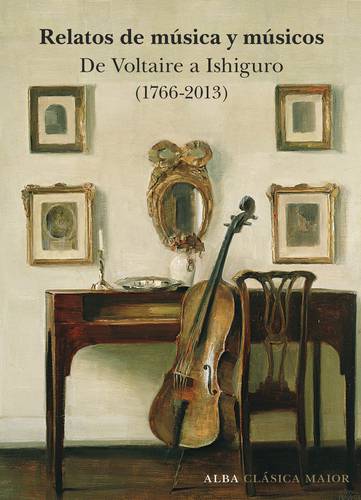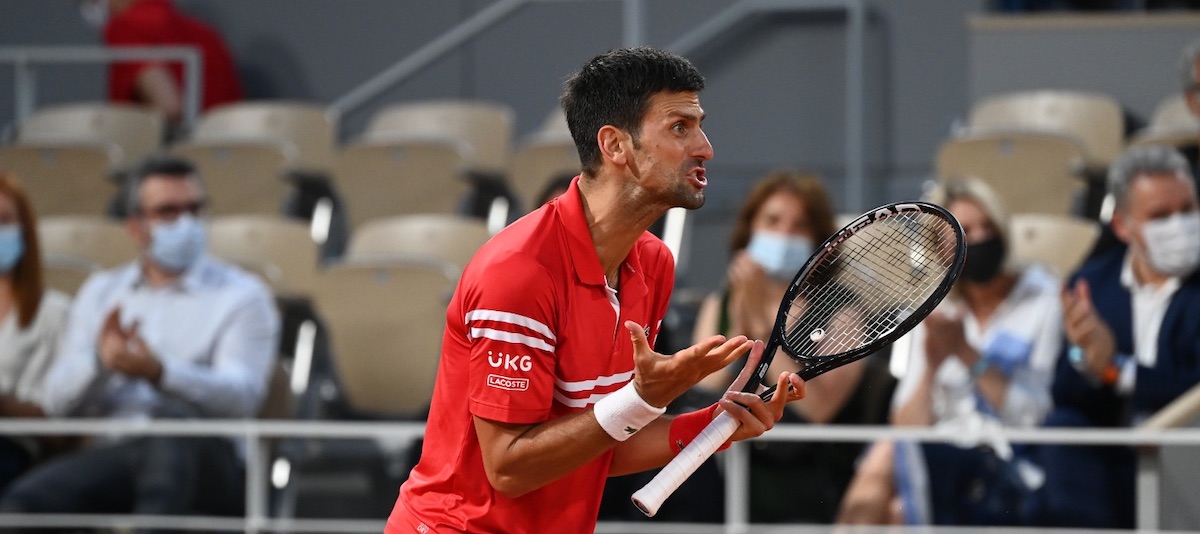We are facing a bibliographical jewel: Tales of music and musicians: from Voltaire to Ishiguro (1766-2013), published in Barcelona by Alba Editorial, with a selection of texts and presentation by Marta Salís. It is a beautiful book whose cover immediately seduces us. It perfectly accommodates the nickname of a bedside book due to its size, thickness, comfort and intimate decorum.
In 723 pages, we have 44 stories from the great masters of Anglo-Saxon, Germanic, Nordic, Mediterranean, Slavic and Latin American literature. All the texts in this thick, imposing volume are music, that is to say: their raw material is music, as characters, referent, anecdote, background sound and form.
The index is impressive: Voltaire, Brothers Grimm, Gérard de Nerval, Balzac, Herman Melville, Tolstoy, Bécquer, Turguénev, Maupassant, Thomas Hardy, Chekhov, Thomas Mann, Luigi Pirandello, James Joyce, Katherine Mansfield, HP Lovecraft, Nabokov, Dorothy Parker, Langston Hughes, Carson McCullers, Kazuo Ishiguro and a pleasant surprise: this monumental anthology of great consecrated people ends with the amazing text of a young Mexican: Horacio Warpola. Good news.
This book was obtained by the record company three years ago, when it was released worldwide, in ebook, and among its characteristics and virtues, in addition to succulence, is that it is about those books that can be read in the order that one has, or from beginning to end, as we did in recent weeks that can already be obtained in bookstores from Mexico City copies printed on paper and hardcover.
The convenience of reading in the format ebook It is then exchanged for the iniquitous joy of wasting time leafing through the book and falling into a trance in front of the beauty, mystery, endless power of each and every one of its pages.
Although the format ebook It allows us to read it on the cell phone and in any place, situation or circumstance, either on an iPad or on the screen of the desktop or laptop, having the physical book in the hands allows an unbeatable pleasure not only to the touch but to all the senses, to the soul and to the spirit. Turning each page one by one is like jumping from one cloud to another, floating in the sky in the fascination of reading that makes us travel, dream, wander, enter a trance and all sorts of daydreams.
We turn the pages and we already have the huge book on our thighs, now on our chest, then above our head and when we reach the almost final pages, possessed of pleasure and magic with each and every one of the previous 42 stories, when we get to chapter 43, corresponding to the text by Kazuo Ishiguro, the degree of fascination is already immense and leads us to say: Kazuo, our beloved Ishi, is the greatest writer who is in front of our noses, ears, eyes and few of us We see his genius.
Many know him from the movie What’s left of the day de James Ivory, con Anthony Hopkins, Emma Thompson, Christopher Reeve y Hugh Grant, basada en The Remains of the Day, the novel published in 1989, and because he was awarded the Nobel Prize for Literature four years ago and because there were those who threw a tantrum because the previous year the Swedish Academy awarded “a singer-songwriter”: Bob Dylan, and the following year they gave it to another “singer-songwriter”: Kazuo Ishiguro.
Our Ishi he is one of the most beloved writers by legions of readers, actually. His writing is so powerful that when we get to page 687 of the book we are reviewing today: Stories of music and musicians, Already flat we have a very strange body position: with the right palm we hold the remaining 36 pages while with the left hand, tending to close into a fist, we hold the thickness of those already read and remain absorbed, exorbitant, and in orbit.
Like almost the entire book, Ishiguro’s text supports characters with fictitious names, but his power is so great that we cannot resist the temptation to search Spotify for music of his character, the crooner Tony Gardner and of course we didn’t find anything, well, that’s a saying, because what appears as music by a singer with that name is very x, that is to say: nothing.
Verisimilitude is one of the virtues of the fantastic symphony that is every Ishiguro novel.
And since we said to search on musical platforms for the music that is born from this generous book, the editors had the wisdom to add at the end of the book the list of the musical pieces mentioned in all the stories, as well as a link where they can be heard: http://bit.do/relatosdemusicaymusicos
In addition to a QR code.
As in any anthology, there are texts that we already knew and the selection is not always to our complete satisfaction, which also happens in albums that compile songs from our favorite groups and we do not always agree with the selection criteria.
I will give an example: the text that Marta Salís chose to represent Pascal Quignard, the Disquero’s favorite author, is Every morning in the world and one can understand the reasons: it is the most accessible text, in all senses and perhaps the most representative of Quignard, in addition to the fact that, once again, there is a cinematographic reference: many know the film Every morning in the world while few know the literary universe of the author of the script of that film, whose origin is the novel All the mornings of the world, of Quignard himself.
The Record Company would have selected the one that, humbly but fervently, it considers to be the most beautiful text that Pascal Quignard has written and is called The Music Lesson and appears in the book of the same title.
That detail of reader and music lover, the healthy disagreement with the selected texts, is not a negative criticism, it is a dialogue with the anthologist, and of course it does not detract from the compilation at all. Every good anthology, this is the case, generates a dialogue with its readers, necessarily and happily.
And now that I said book of the same title, there are stories included in this volume that belong to books of the same or another title but that we already knew, such as the one selected by Marta Salís to represent James Joyce: A mother, which is one of the 15 stories that make up Dubliners.
And now that I have mentioned James Joyce, his example serves to reaffirm our assertion that these texts are music: the Irish writer was a tenor, he went into exile after they crassly plundered a prize in a contest and dedicated himself to writing and affirmed that he was not a writer but a musician, although his scores had lyrics instead of musical notes, and by the way of his enigmatic, inscrutable work Finnegans Wake, he simply said: “it’s pure music”.
And since I mentioned James Joyce, I must say that among the particularities of this majestic anthology is that, curiously, Irish authors abound, in addition to Joyce, and fortunately women abound, some of them originally music professionals as well, like Carson McCullers, who was a child prodigy (recurring theme in this anthology: child prodigies) destined to be a concert pianist, or Katherine Mansfield, a cello virtuoso whose literary style was outlined by Wagner and Debussy, and of course, another beloved writer : Virginia Woolf, who used music as a metaphor for literature and music served as a model to develop the stream of consciousness narrative technique.
Also, this anthology abounds with writers who were first reporters, journalists specialized in music or collaborators in newspapers and hebdomadaries.
Many of the authors anthologized here were or are musicians, such as Pascal Quignard, the aforementioned Carson McCullers and Katherine Mansfield, ETA Hoffman, who was also a composer, conductor and music critic, or Willa Cather, a journalist specializing in music, or the musical journalist Alejo Carpentier, or Langston Hughes, who read his poems accompanied by a jazz band, or James Baldwin doing gospel, blues and jazz, and we return to our beloved Ishi, who is documented by Marta Salís, author of the splendid files that precede to the texts of each anthologized author: Kazuo Ishiguro “wanted to be a musician and knocked on many doors in search of a recording contract and learned something as a lyricist, according to him, key in his literature”.
Now Ishiguro speaks: “that, in an intimate, sincere and first-person song, the meaning cannot be clear on paper. It has to be ambiguous, sometimes you have to read between the lines”.
Between lines, on lines, in subtext, our fascination grows and grows as the pages before us in the book decrease and those we leave behind bulge, but remain forever in our memory and in our hearts.
Thank you, Marta Salís, for this beautiful anthology. Thank you, Alba Editorial, for this bibliographical jewel. Thank you, beautiful reader, kind reader, for your patience and kindness.
I recommend reading this beautiful bedside book, enjoying these beautiful 44 texts by writers who are composers. Joseph Conrad says it from the beginning of this book, on page 9, and all the anthologized authors will confirm it with their texts on the following pages up to a total of 723: “Music is the supreme art”.
–


